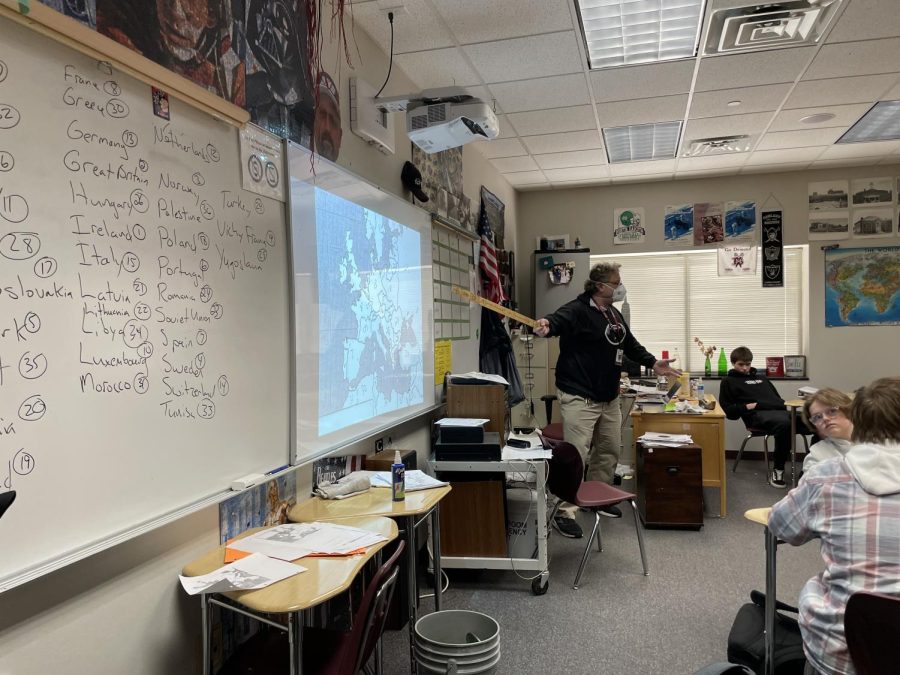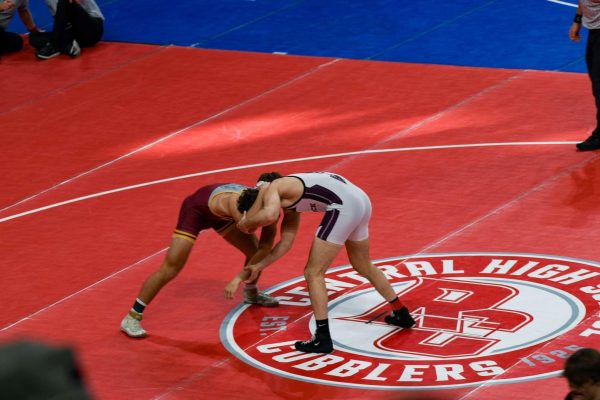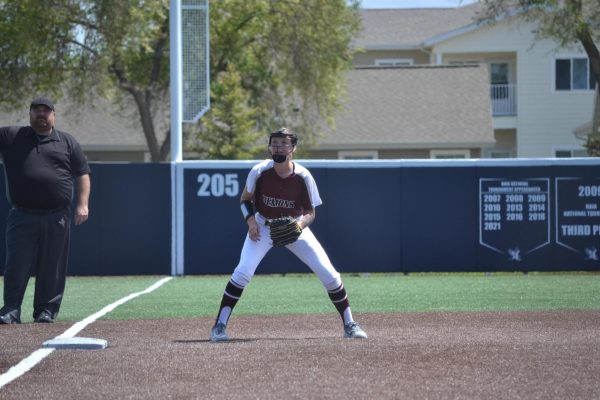Preserving Demon history
BHS teacher and coach shares Demon history as a way for the past to be brought back to life.
In the classroom. BHS teacher and coach Brad Leingang can be found in his classroom teaching or on the field coaching. He combined both passions he has to create a website with track and field history from BHS. “I love learning about history,” BHS teacher and coach Brad Leingang said. “and I knew I always wanted to coach.”
March 6, 2023
BHS teacher and coach Brad Leingang is passionate about two things- sports and history. He has managed to build a career combining both. At BHS since 1997, he has shared his passion for history by teaching a variety of social studies courses.
“My dad was a custodian at Mandan High and I grew up around that atmosphere,” Leingang said. “I love learning about history and being able to see artifacts.”
Leingang also grew up around sports. In high school, he played football, basketball and track. In the spring of 2003, Leingang was hired as a track and field coach for BHS. This year marks his 20th coaching season for the Demons.
“I was fortunate to have some dedicated coaches at Mandan as a kid and I knew I wanted to coach,” Leingang said.
Around 15 years ago, the track and field hall of fame was being updated. Leingang took it upon himself to compile information about all past state meet results.
“I thought it would be kind of cool to have the past state results and marks for the public,” Leingang said. “I thought that the coaching history was unique.”
Leingang finds all of his information at the North Dakota Heritage Center and State Museum.
“There are a lot of archives up there, lots of newspapers and microfilm,” Leingang said. “When you read the newspaper from the early 1920s, early 1900s, they get into a lot of detail about what happened at the sporting events.”
Bismarck High School has been open since 1873. Forgotten statistics are being brought back to life with the assistance of Leingang’s website.
“BHS has been known for academic and athletic success,” Leingang said.
Leingang reaches out to past coaches and athletes when more information is needed. Once he has his information, he spends his free time updating and adding to the Bismarck High Throwers website he created.
Leingang’s love for history and sports has led him to stumble into some hard-to-believe stories.
“In the 1920s, Bismarck High played Wilton and the game was going into overtime. The coach said they were done playing. A lot of the players had fouled out and they felt that the officiating was so bad that they forfeited the game and walked out. They then played them in the districts and beat them by 50.”
“I found it interesting that during the flu pandemic of 1918, Bismarck and much of North Dakota had school canceled because of multiple people dying at the time. In the article, it said “Bismarck will open schools up next Monday.” That Monday was November 11th, 1918 when World War I ended.”
“I looked in one of the yearbooks and noticed in the 1970s the boys had nice high jump mats to jump into and the girls had these sacks,” Leingang said. “I talked to Derrell Anderson who was a coach and was an athlete during the 70s. He said that during the 70s, the boys’ coaches would not allow the girls to practice at the same time as the boys. They had to wait until the boys were done. Times have changed.”
Times have changed, yet Leingang says the dedication to excellence in academic and athletic performances and Bismarck High’s diversity remain the same.
“Bismarck High has always been a very diverse school. The 1929-1930 boys team won state football, basketball and track. That 29-30 team had an African American, Eddie Spriggs, who played some baseball with Satchel Paige in Bismarck and wrote about his experiences in North Dakota. Also a Native American, Wally Green, whose Dad played with Jim Thorpe, at Haskell Indian School. And white athletes, like Ted Meinhover, who is in the UND Hall of Fame.”
Thanks to Leingang, stories like these will be preserved forever.
To find WDA, state and personal records for track and field, football and basketball, visit Leingang’s website here






